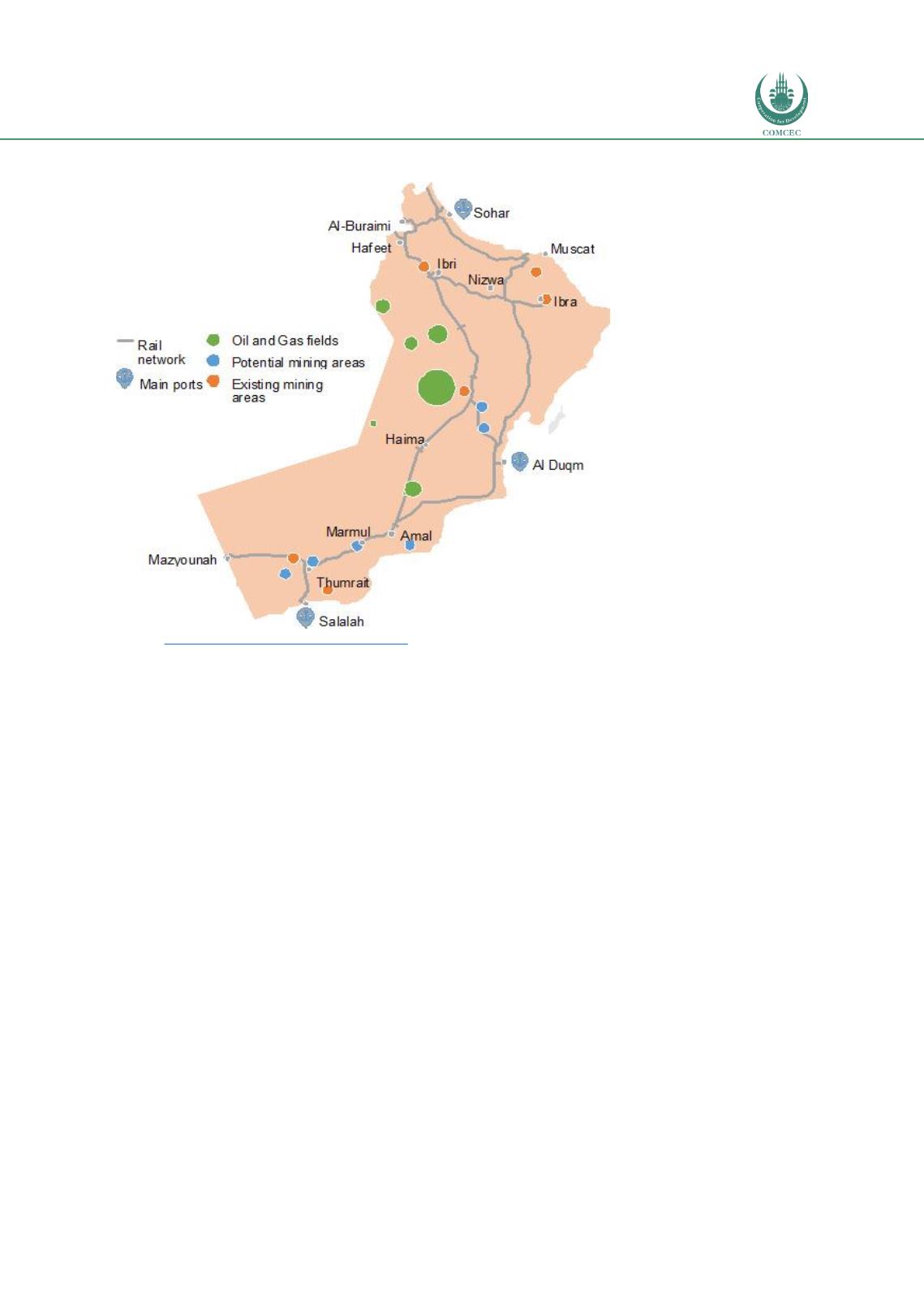

Planning of National Transport Infrastructure
In the Islamic Countries
131
Figure 37: Plan of Oman Railways
Source
: https://www.omanrail.om/project.htmlIn addition to the GCC Rail Project, the Public Authority for Mines has proposed building a
railway line for transporting minerals to Duqm Port for onward export to overseas markets.
Clearly railways are being considered by the SCP as an important component of the national
transport mix, having previously excluded it. This is welcome news as it shows that even oil rich
countries understand the need for more energy efficient transport.
A public transport (PT) strategy for 2017 to 2025 was recently approved by the Council of
Ministers as is mentioned in opening section of this case study. The plan is set to include public
services, such as bus routes, taxi services, the regulation and monitoring of the transport sector,
the goals of the transport strategy and its timetable, as well as illustrating the socio-economic
benefits and the basic environment for enabling public transport. An improved transport
framework is seen as meeting the needs of the working population most of whom are Asian.
That Oman needs a public transport system that is cost-effective and convenient is remarkable
in a society that has provided mostly for the Omani’s. A new public transport system would
benefit transportation of working class people is a major and welcome change in policy. For
example, in Muscat the capital of Oman, the PT system is planned to expand its bus network with
an addition of more than 60 bus stops and 40 new buses that will make commuting easier along
a new main route connecting Ruwi and Seeb. The new PT system, which will have a zonal based
ticketing, is expected to reduce traffic congestion as well as improve mobility. Other measures
planned include dedicated lanes for buses and taxis.
















